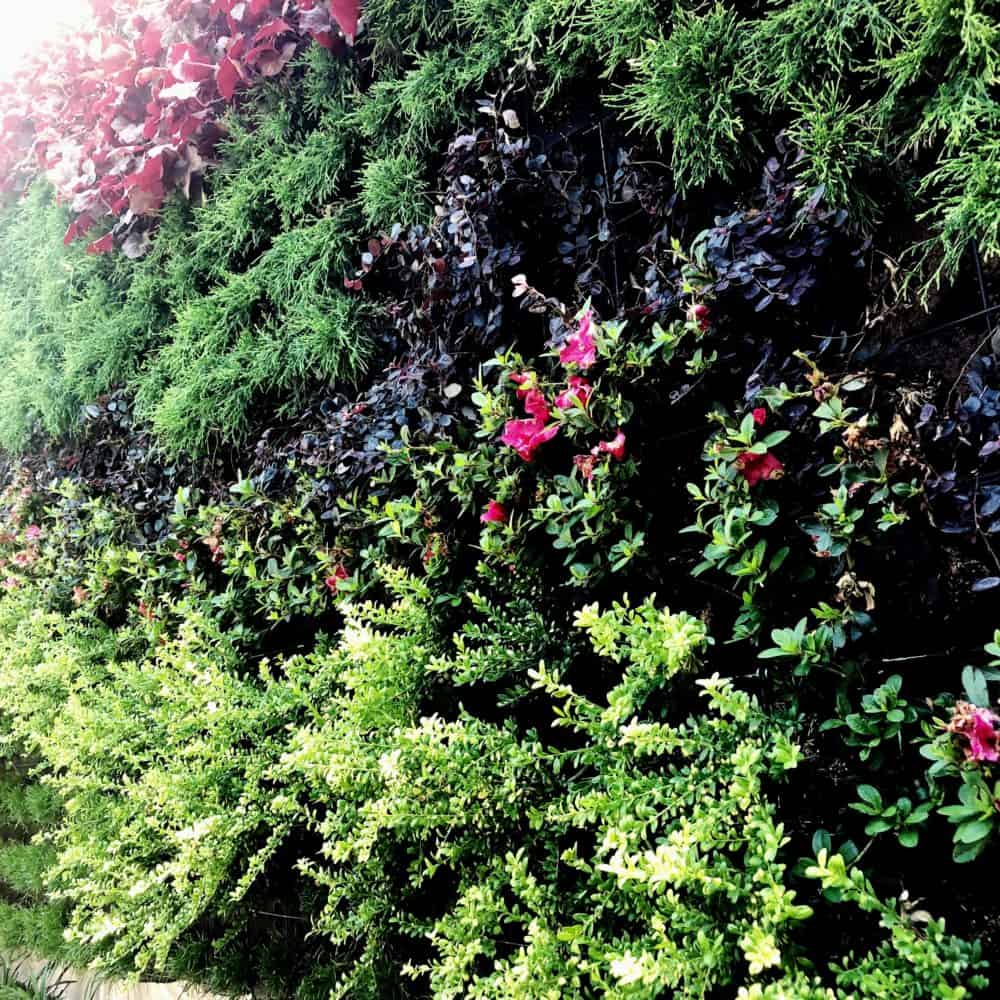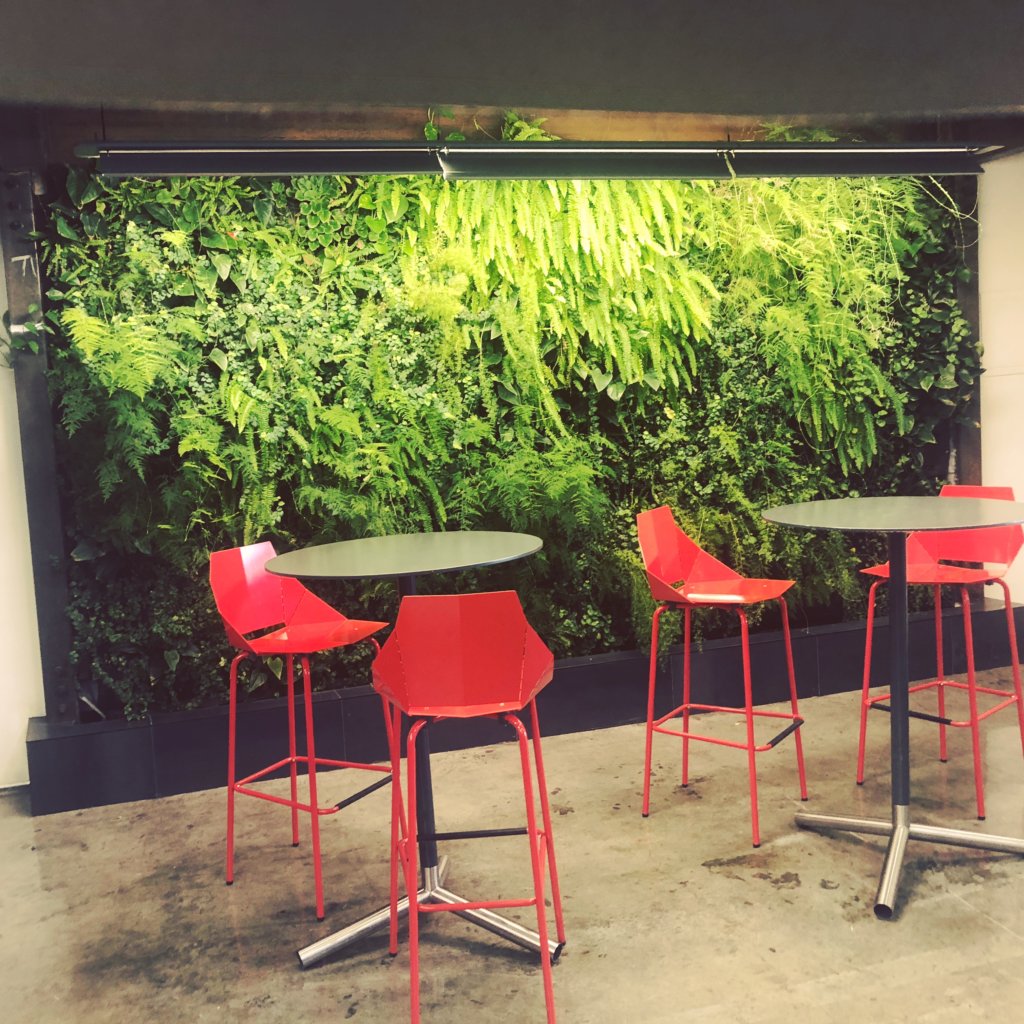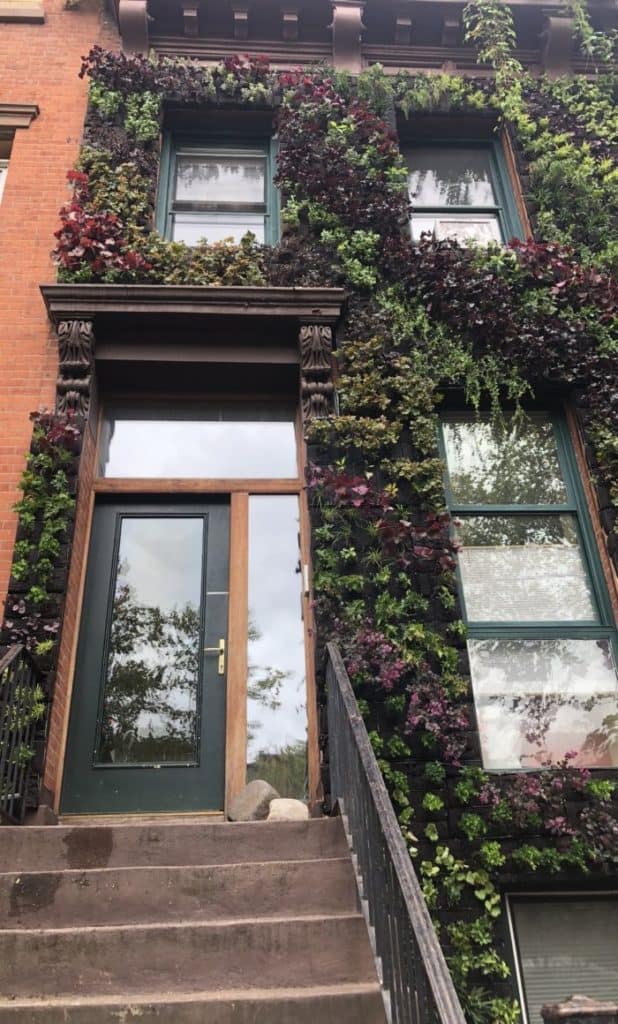Green wall installations are becoming more common in New York. More people are realizing the potential of these living systems. In most cases, the systems aim to improve the quality of the built environment to provide social, aesthetic, environmental and economic benefits.
Green wall systems differ in their design and construction from DIY projects to modular green wall systems. Besides, there are buy off the shelf solutions available and proprietary systems that are custom-fitted to a wall. A green wall installer and specialists can provide advice on the most suitable green wall design and installation and the best construction approach.
What is a Green wall?
Green walls are vertical structures that have several types of plants or other greenery. Often, people plant the greenery in a growth medium on the wall consisting of soil, synthetic growing medium, or hydroponic water. The green wall systems are generally attached to an external or external wall. In some cases, the system may be freestanding. Green walls incorporate vegetation, growing medium, irrigation, and drainage into a single system. When making a green wall, one can utilize containerized planting to create the vegetation cover. The plantings are used in place of plants that climb and spread to provide cover. This set up is known as a living wall or a vertical garden.
Benefits of green walls
Green walls create fascinating, natural and appealing scenery on walls. Bringing in natural elements to places where they cannot generally be seen lifts people’s mood. It is imperative to note that green walls provide immeasurable benefits to the building owner or occupants of a house. Below are outstanding benefits of green walls.
- Improved thermal performance
In addition to green walls providing an attractive design feature, they also add to building insulation. Direct shading of the wall surface achieves insulation. Green walls create cooler surroundings and improve the quality of air in a house. A substantial benefit of green walls is the potential to regulate heating and cooling of a building. Most notably, green walls can reduce heat gain in summer by directly shading the building surface from sunlight. In winter, the walls also help in preventing the warmth inside the house from escaping to the surroundings. This may be a great approach to saving energy costs. A recent study has indicated that people whose homes have green walls saves energy as compared to those who only have plain walls.
- Increased property value
Installing a green wall on a building makes a point of difference and provides a visual appeal. This makes a building into a landmark, and it may have an increase in commercial returns. The commercial value of a building increases and the property is highly valued when selling. In short, one may use a green wall as a feature to increase asking price when selling a property. For other sellers, green walls may also act as a perfect way for hiding unattractive structures. In turn, selling a property becomes easier. While negotiating, property owners can cite the reduced energy costs, aesthetic appeal and visible dedication to sustainability green walls. This way, they will evoke unique advantages of their property over the competition.
- Urban food production
The life in cities has increasingly become dependent on the availability of and access to green open space. An exterior green wall provides opportunities for food production within cities. In dense urban cities, the contribution of green walls should not be underestimated. Some vertical gardens are designed specifically for growing herbs and vegetables. Besides, plants such as passion fruits can also do very well on a green wall. This implies that vertical gardens can be a great solution to growing food in a lack of space. Nevertheless, using green walls to grow food indoors as a decorative feature is not advisable. Although there is no reason why one should avoid it, cutting off food will leave empty spaces, and this is not something anyone wants.
- Cleaning the air
Although the effectiveness varies with plant species and area of cover, green walls contribute to the removal of gaseous pollutants from the atmosphere. Plants with a high foliage density trap small particles. They assist in removing pollution through dry deposition on the foliage or through rain-wash. On a larger scale, green walls can go a long way to reduce overall environmental heat gain. In turn, this improves air quality as less photochemical pollutants are produced at lower air temperatures.
A recent study indicates that plants have a significant capacity to reduce volatile organic compounds for the air. Inside the house, carpets, soft furnishings, and office equipment are conventional sources of gaseous pollutants. With green walls, these pollutants can be reduced to negligible volumes, and this can help to improve the air quality of the indoor environment.
- Noise Reduction
Green walls have the added benefit of reducing the sound level in and outside buildings. The foliage of the plants reflects and absorbs acoustic energy. Remarkably, indoor green walls are ideal for reducing ambient noise in echo-prone buildings. Also, outdoor living walls offer the same benefit on a larger scale as far as outside noises are concerned. In most cases, building owners use outdoor green walls to tackle noise pollution such as that caused by city traffic.
Planning for Green Wall Drainage and Irrigation
Proper drainage should ensure that the green wall does not compromise the structural integrity of the building. Moreover, the drainage system should be in such a way that the waterlogged layer does not adversely affect plants. One should ensure the drainage system in place must effectively get rid of surface and sub-surface water from the wall. Often, green walls may be able to reduce water flow and assist in retaining stormwater run-off. Even so, it is necessary to have drainage systems that can cope with extreme rainfall events or flooding.
Every New York living wall installer can ascertain that irrigation is critical to the success of most green walls. This is because green walls have an unusually high water demand. It is strongly recommendable for one to use non-potable water sources for irrigation.
Sustainable design of green walls should incorporate critical principles of water sensitive urban design, mainly to manage stormwater in the landscape. Recycling of irrigation water is useful in green wall installations, especially where large volumes of water flow through the system. Untreated water can spread soil-borne disease and thus one may require treatment to disinfect and treat run-off water.
Sourcing for Green Wall Installation Skills and Expertise
Most green wall installation projects require the involvement of many different skills. The more complex the project may be, the more elements there are to coordinate. Engaging an experienced specialist and green wall designer is crucial. Always, this should be during the design and consultation phase rather than at the end of this process.
Although there are no standards for the specific purpose of green wall installation, some building code standards are relevant. This makes it necessary to consult with various professionals, some of them possibly on an ongoing basis. For small-scale projects, a green wall provider will often supply several services, from project management, engineering, design, and irrigation. In some cases, it will be of paramount importance that the provider collaborates with the rest of the design and project management teams.
Regulations That Influence Installation of Green Walls
The construction of a green wall may require a planning permit from the local council. Currently, there are no strict planning guidelines or requirements for green walls. Nonetheless, associated building works may need a planning permit. Such actions may include, for example, replacement of existing structures for green walls.
It is essential to manage the vegetation in a way that complies with local laws. As most experts will advise, compliance with the regulations of the local council is vital during the building and maintenance of green walls. The local council Laws will often address issues related to but not limited to the following matters.
- handling and disposal of waste products such as pruning material produced by maintenance contractors
- control of vegetation considered to be a weed
- handling of overhanging vegetation on public land or which may have a negative impact on lighting or traffic signs
- drainage over public land
- use of elevated working platforms or cranes on public property during the construction or maintenance of green walls
- control of waterproofing and drainage systems to make sure that the building has a healthy environment for the occupants
- compliance with fire safety regulations, including fire-fighting equipment and fire resistance of materials used to make the green wall
Insurance and System Warranties
Insurance companies are now starting to offer insurance covers for green walls due to the high costs associated with the installation. Manufacturers and dealers in green walls are now giving warranties on newly purchased sets. The overall cost, scale, and complexity of a green wall will determine whether insurance and warranties are relevant. In the event you do not find a local insurance solution, it may be of ultimate benefit to contact insurance companies with a global reach that gives green walls relevance.
The warranty for a green wall will be straightforward if an established installation company installs a proprietary system. On the other hand, a contractor licensed by the installation company may do the same. In this case, the parent company should give a warranty against failure of any or all of the components. Nowadays, it is easy to get a Brooklyn green wall installer who is qualified and licensed by an installation company.
Custom-built green walls with mix-and-match components or multiple providers may not be as straightforward to warrant or insure. It is imperative to note that waterproofing is more likely to be warranted separately if a third party installs it. However, the company supplying and or installing the waterproofing may refuse to take blame for breaches of the membrane that occur after it is certified as watertight. Notably, this may even be worse if they have no ongoing involvement with the project.
It is prudent to ensure that there is clarity around the warranty conditions. As the client, you usually have the option to negotiate a defects liability period with a contractor. The contractor will be responsible of repairing of defects that appear within an agreed period after project completion. Moreover, the contractor may have responsibility for defective work beyond the product warranty period. Contractors or manufactures may ignore warranties if a buyer employs a DIY approach with green wall products.
Special Considerations for Green Walls
Lighting is often a requirement for green walls located in low light exposure areas. Some green walls may be set up within non-lit areas. Lighting green walls is a highly specialized process and require the services of a lighting designer or engineer.
In addition, plants require precise lighting quantities and qualities to grow and develop appropriately. Tropical and subtropical green wall installations can generally survive in lower light conditions as compared to Mediterranean, temperate plantings. It is necessary to have broad knowledge and expertise of horticulture and design of green wall systems in selecting the right species for the light levels available on-site.
Another crucial consideration for green wall installations is air movement all over the foliage. This is important to help in the prevention of fungal growth in the green wall. Moreover, a green wall may require additional ventilation to ensure sufficient air movement for indoor walls. Outdoor walls usually create a microclimate that generates enough air movement. However, one should give special attention to sheltered positions.
Lack of attention to these special considerations for green walls may turn out to be disastrous. It may not only cause deteriorating growth but may also affect the beauty of the green wall. It is important to seek more advice from green wall experts concerning other things to consider when installing and maintaining green walls.
Specialists in green wall design and installation can provide advice on the most appropriate system and the best construction approach. Every member of our team of experts is well versed with green walls. Feel free to contact us for more information and advice about green walls. We shall be happy to assist in you in installation as well as maintenance of your green wall.



